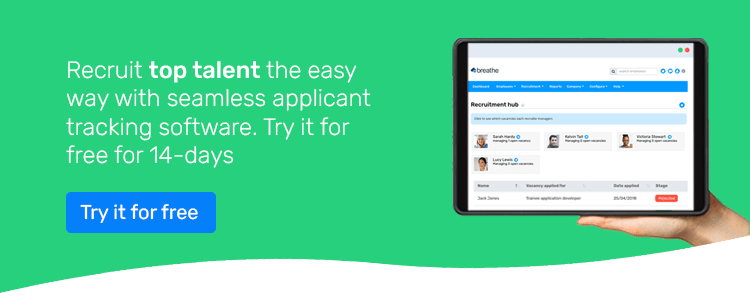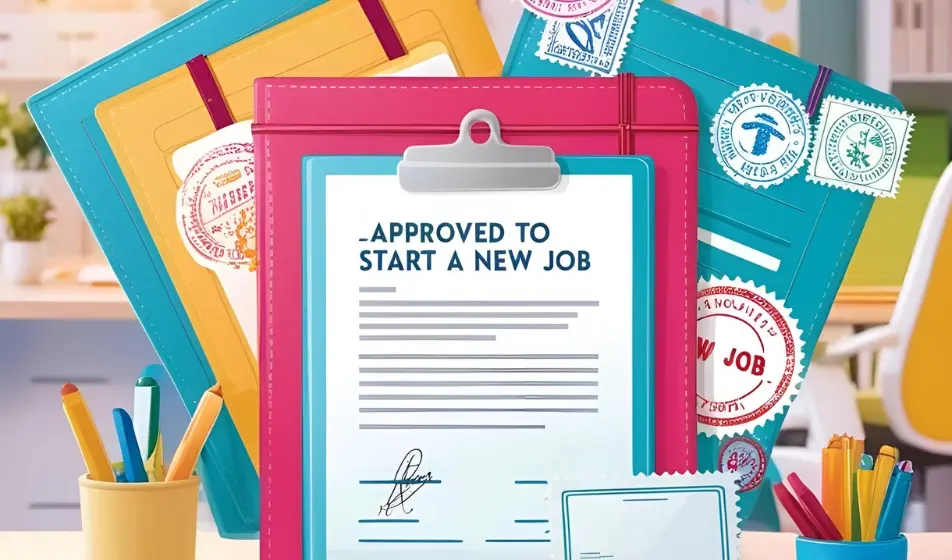By its very nature, unconscious bias can be difficult to unpick.
Difficult – but not impossible. And when it comes to recruitment, it’s more important than ever to examine.
In this blog, we spoke to Ben Beveridge, Head of Recruitment Success at hireful on how SMEs can reduce bias throughout their recruitment processes, with a focus on selection methods.
We know this topic can seem overwhelming to busy SMEs who don’t have a lot of time – but small changes can make a difference. Awareness & action are vital for creating a truly inclusive workplace.
Skip to:
- Begin before the job description
- Bias in applicant screening
- Consider your SME as a whole
- Beware of biased 'trigger terms'
What is unconscious bias?
Also known as implicit bias, unconscious bias describes the associations we have that we aren’t consciously aware of.
Imperial College London describes unconscious bias as “[being] triggered by our brain automatically making quick judgements and assessments. They are influenced by our background, personal experiences, societal stereotypes and cultural context. It’s not just about gender, ethnicity or other visible diversity characteristics – height, body weight, names and many other things can also trigger unconscious bias.”
Yale psychologist David Armor refers to the ‘illusion of objectivity’, the idea that we think we're free of the biases we quickly recognise in others.
But unconscious biases run deep, and there’s always more work to be done.
4 ways to avoid common biased recruitment mistakes SMEs make
The most important bias-reducing steps happen before you’ve even started recruiting.
You could be engineering pre-set avenues for candidates without even realising, due to unconscious bias.
In this section, we list some common mistakes small businesses make when it comes to inclusive recruitment & selection methods – and steps to move forward.
1. Begin before the job description
“Consider why this vacancy exists - the skills & competencies you need for this role (not the type of person you need in this role, or copying like-for-like what you did last time," Ben shares.
It’s also good to really consider what you’re asking for – is a degree relevant to the role, for example, or was this what you’d imagined is necessary, or used as a hiring threshold before?
Ben advises considering what skills are actually needed to fulfil this job role & thinking about why the company needs this role in the first place.
“For example, someone might say they want this person to have a degree. But it’s important to qualify whether this is necessary – for the position of HR assistant, what does a HR degree bring vs. someone with 2 years’ HR admin experience? Asking the questions upfront in this way can reduce bias further down the line.”
Stepping right back and considering the fundamentals is the most important place to start.
2. Bias in applicant screening
CIPD research notes there are three different types of bias that can be present in screening applicant CVs.
-
The first is through the information applicants include in their CVs, and how this may signal factors that aren’t relevant to the job, like education, address, marital status, etc.
-
The second is in the way that interviewers create impressions of candidates, which can often rely on stereotypes.
-
The third factor is the decision-making that follows this, which can “undermine workforce diversity and lead towards [workforces that are all similar].”
Being aware of these different ways bias can present is the first step to minimising it as much as possible in your recruitment process.
Watch recruitment webinar on-demand
3. Considering your SME as a whole
You could be inadvertently excluding people who require reasonable adjustments by not offering virtual interviews, for example, or not optimising your website/job vacancy portal to people who might be visually impaired and need to use screen readers.
Ben notes that people sometimes wonder why their candidate pool isn’t diverse, but they’re not looking at how they’re advertising the job, what language they’ve used, if they offer flexible or hybrid working as an organisation.
“Recruitment conversations should always start at the very beginning – you could be restricting your business & driving away worthy candidates by not advertising salary, for example, female candidates are less likely to apply if salaries aren’t advertised,” Ben shares. “You might then later have initiatives to reduce bias, but if your bias is coming through in what candidates immediately see from you, you’re already limiting that talent pool unknowingly.”
“So many factors are needed for truly inclusive recruitment, that small businesses need to view the holistic placement of the job within the organisation – and really consider how you’re coming across, and which type of candidates you’re appealing to.”
4. Beware of biased ‘trigger terms’
Ben advises that there are some terms that should always raise a red flag.
“If someone ever asks you to ‘just do what we did last time’ or to find them ‘a like-for-like replacement’, this should be a warning to step back, as bias is nearly always present and needs to be examined.”
Ben advises that these are trigger phrases that should be treated with great caution – if you’ve never assessed what you did in your recruitment process last time, or if you reduced bias within your recruiting process, then it’s not fair at all.
“Ask whether you can do it a better, smarter way, if you’re looking to achieve a more inclusive & diverse recruitment process.”
3 ways SMEs can actively reduce unconscious bias in their recruitment processes
Now we’re aware of common mistakes, Ben shares his actionable tips for how small businesses can actively reduce bias within their selection & interview processes.
1. Technology
Technology can help to create a diverse talent pool – via scoring, shortlisting (against competency-based criteria), tracking data or gathering extra information.
“Anonymising CVs or operating blind CV processes and sifting takes a lot of time without technology – which then means there’s less time for conversations with hiring managers, or tailoring the system to ensure every candidate follows the same process. Technology can help hugely to free up recruiters time for considering reasonable adjustments, for example, or having those conversations with applicants, hiring managers or HR around change processes to be fairer and less biased overall.”
2. AI & bias
Whilst you’ve got to be careful not to train AI with your own bias, it can be useful in eliminating bias in recruitment processes.
Ben shares his thoughts around how AI can be useful in reducing bias. “If you provide AI with the impartial scoring criteria you need for the role, then in theory, AI should measure candidates against this and nothing else. A good determiner is if you’re considering rejecting someone, but according to your criteria, AI suggests that they meet requirements, this could be highlighting some of your own unconscious bias.”
Ben highlights that AI can also help with supporting a neurodivergent candidate with reasonable adjustments, for example. Or if you’re struggling with creating competency-based questions, AI can help to create these (especially for time-poor SMEs).
3. Rethinking interviews
Interviews can be a minefield, fraught with bias with how we perceive and assess people.
An article in the Harvard Business Review advises that interviews shouldn’t be your evaluation tool of choice, as they’re “fraught with bias and irrelevant information.”
When a sociologist interviewed bankers, lawyers and consultants, they reported commonly looking for someone like themselves in interviews. This type of replication in hiring is a dangerous form of bias, and could also link to the gender segregation of jobs (e.g. a male banker might be more likely to hire another male banker).
Preparation is key here, too – fair, competency-based questions are vital to ensure a level playing field for all candidates you’re interviewing.
2nd interviewers & the 'halo effect'
Ben reinforces the importance of a second interviewer, wherever possible.
“It’s hard to listen, absorb answers, take notes and think about next question all at once, when you’re alone. Having a second interviewer as support, wherever possible, can help to reduce the ‘halo effect’ - the biased effect of building a rapport or liking someone more because you have something in common with them. This can be going to the same school, or knowing someone in common and can unfairly skew perceptions in an interview in a candidate’s favour.”
Having someone else in the room that might not have the same links to a candidate can be useful to reduce this effect, remain impartial & focus on scoring criteria only, according to Ben.
The halo effect doesn’t just apply to connections or things in common with a candidate – this can also be present where you believe someone is trustworthy and intelligent because they’re well-groomed, tall, or confident, for example. It’s the association of favourable qualities based on traits you unconsciously view in a positive light.
How useful are diversity goals?
Are diversity goals useful? Rather than diversity goals, Ben advises a diversity strategy or agenda is a better way of implementing this into organisations.
“Diversity goals can be counter-productive because they shift the exercise into more of a tick-box exercise, rather than getting the right people in the right positions. For instance, wanting to achieve ‘x’ number of female leaders in the business by 2026 isn’t as helpful as considering what might be preventing female applicants from applying.
You might want to ask, what are our parental leave packages like? Do we offer flexible working?”
Ben advises that it’s more useful to think about what you’re promoting as a business & examine your benefits, to then encourage a diverse range of good candidates into the business.
“This is then more likely to build up the internal candidate pool rather than giving someone a role they might fail in, which has wide-ranging negative implications. There are obvious impacts for the employee – mental health, stress, job loss & a cultural problem for the business – as well as a negative internal view of how diverse employees are treated.”
So there we have it – focusing on how you can be an employer that attracts a diverse pool of candidates is always more important than a box-ticking exercise.
Fairer, more inclusive recruitment for your SME
This one might seem obvious - but giving your HR & recruitment team the information & tools they need to be aware of their own bias is crucial.
Ben recommends implementing unconscious bias training - and offering refreshers every 6 months. “I’d advise SMEs not to be overwhelmed with everything they feel they should be doing to reduce bias and improve E, D&I initiatives all at once. It’s important to keep doing what you can, when you can. Small changes once every 6 months might seem minimal but will make a difference.”
As a starting point, Google’s re:work programme offers information on reducing bias & awareness of unconscious bias, and the Harvard Implicit Association Test: Project Implicit can be useful in examining your own unconscious bias.
Breathe’s recruitment tool offers a seamless applicant tracking system for SMEs. You can try Breathe for free for 14 days.
Ben Beveridge is Head of Recruitment Success at hireful, who are partners of Breathe (find out more about our integration).
Signing up to trial Breathe here will give you an exclusive 10% lifetime hireful discount.

Author: Aimée Brougham-Chandler
An IDM-certified Digital Copywriter (2023) & English Language & Literature graduate (BA Hons), Aimée is Breathe's Content Assistant. With 3 years' content marketing experience, Aimée has a passion for writing - and providing SME HR teams with solutions to their problems. She enjoys delving into & demystifying all things HR: from employee performance to health and wellbeing, leave to company culture & much more.






